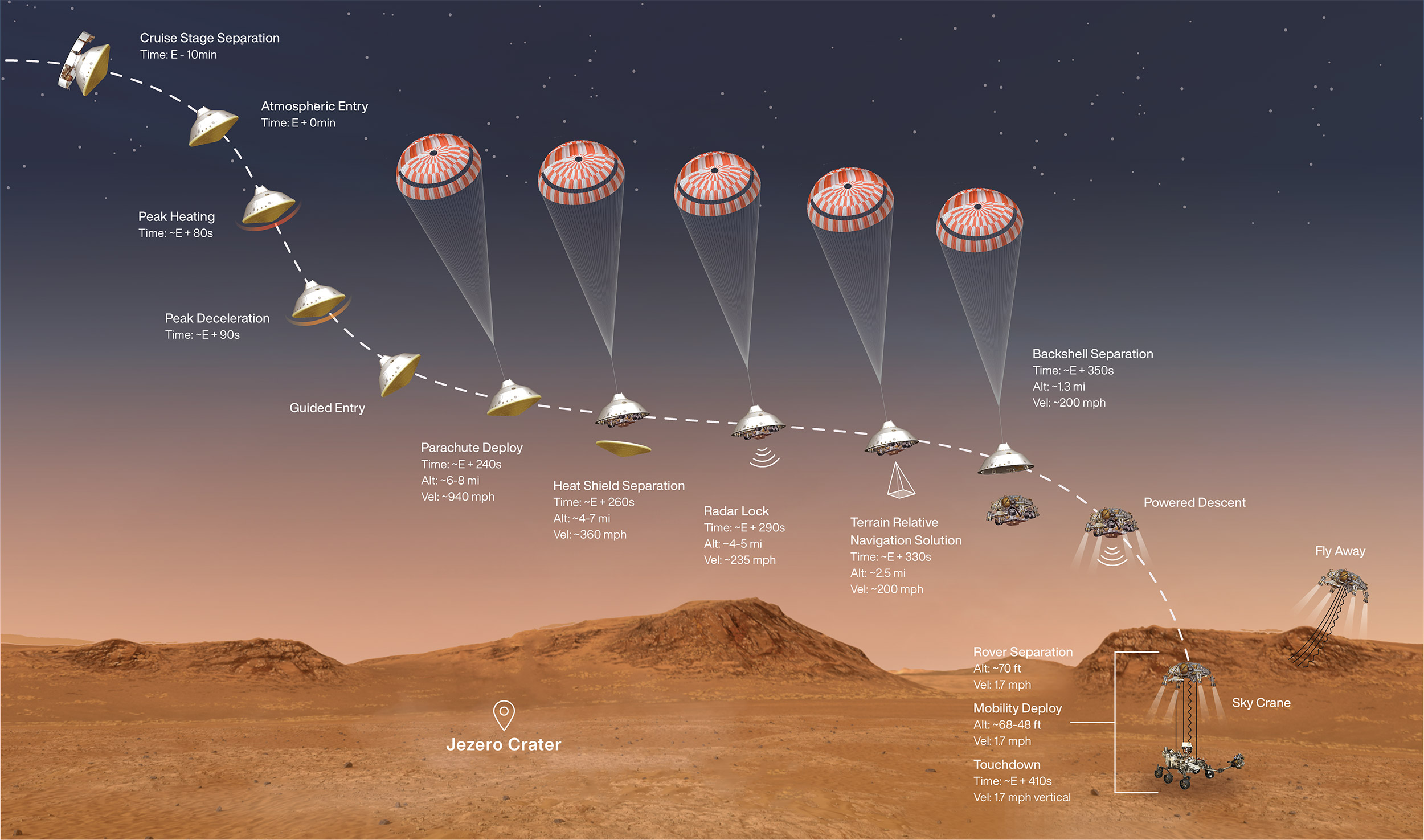
For SpaceUpClose.com & RocketSTEM
CAPE CANAVERAL, FL – The ‘7 Minutes of Terror’ is approaching fast for NASA’s Mars 2020 Perseverance rover mission with touchdown on the surface of the Red Planet at Jezero crater and starting a ground breaking astrobiology mission in search of ancient life now just under 3 weeks away on Feb 18.
Perseverance was less than 25.6 million miles (41.2 million kilometers) away as of Jan. 27 after traveling 292.5-million-mile (470.8-million-kilometer) so far in her seven month long interplanetary journey totaling some 314 million miles (505 million kilometers).
The SUV-sized rover is unrelentingly approaching at 1.6 miles per second (2.5 kilometers per second) on a do or die mission to soft landing at Jezero in search of signs of life on the Red Planet.
Perseverance is humanity’s most sophisticated rover ever launched and the mission includes the daring Ingenuity Mars Helicopter rotocraft which will attempt the first ever powered flight on another planet.
Furthermore it definitively starts the ‘Holy Grail’ goal of Mars Sample Return – sought after by scientists for decades to retrieve Red Planet soil samples and bring them back to Earth for the best possible analysis – to help determine if life ever existed past or present.
“Once at the top of the Red Planet’s atmosphere, an action-packed seven minutes of descent awaits – complete with temperatures equivalent to the surface of the Sun, a supersonic parachute inflation, and the first ever autonomous guided landing on Mars,” says NASA.
“Only then can the rover – the biggest, heaviest, cleanest, and most sophisticated six-wheeled robotic geologist ever launched into space – search Jezero Crater for signs of ancient life and collect samples that will eventually be returned to Earth.”
Watch the exciting mission trailer here:
Video Caption: Perseverance Arrives at Mars: Feb. 18, 2021 (Mission Trailer). After nearly 300 million miles (470 million km), NASA’s Perseverance rover completes its journey to Mars on Feb. 18, 2021. But, to reach the surface of the Red Planet, it has to survive the harrowing final phase known as Entry, Descent, and Landing. Credit: NASA/JPL-Caltech Learn more: https://mars.nasa.gov/mars2020
Scientists selected Jezero Crater as the landing site because they believe it is the perfect place to search for signs of ancient microbial life.
Billions of years ago, the now-bone-dry 28-mile-wide (45-kilometer-wide) basin was home to an actively-forming river delta and lake filled with water.
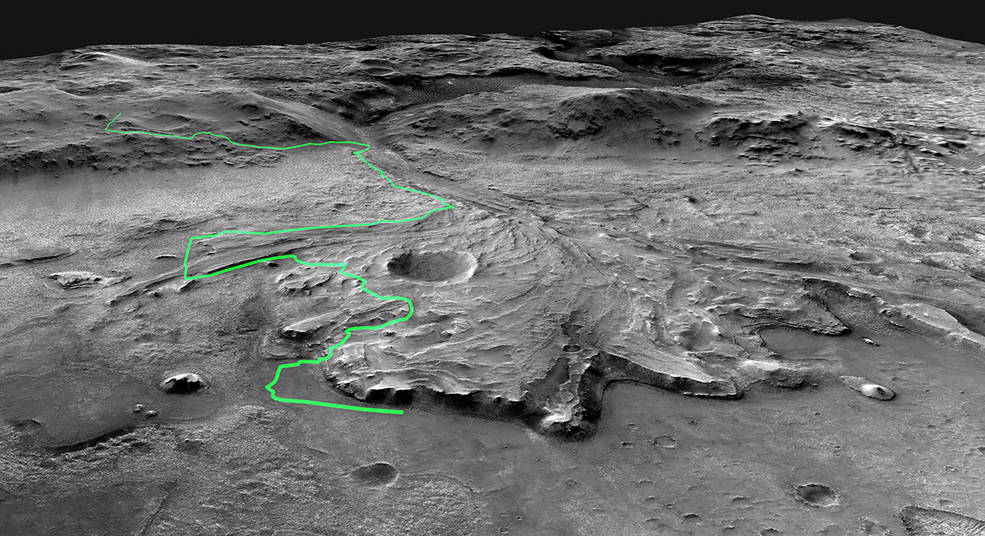
“The rock and regolith (broken rock and dust) that Perseverance’s Sample Caching System collects from Jezero could help answer fundamental questions about the existence of life beyond Earth.”
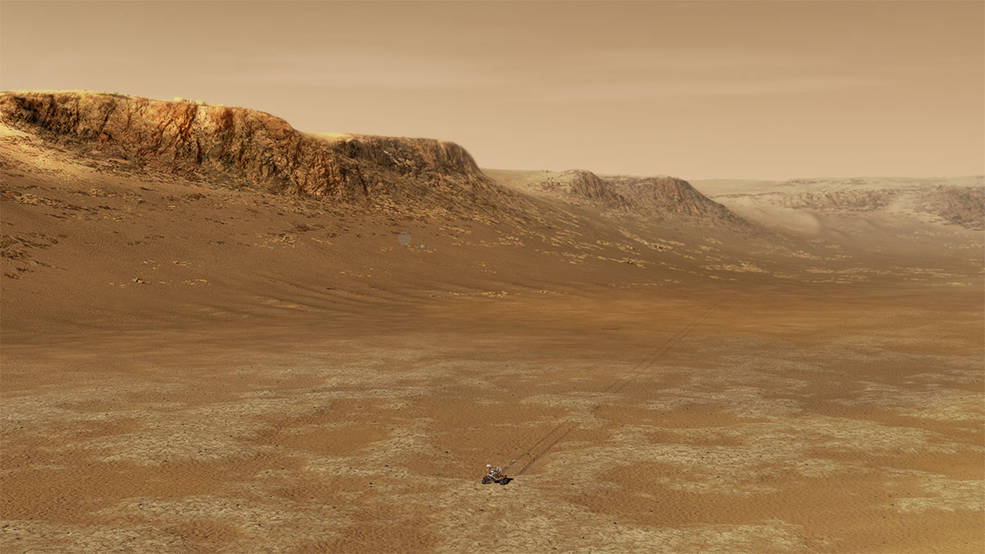
Perseverance is he first leg in a multi-mission astrobiology joint venture with ESA (European Space Agency) to return the first pristine Martian surface samples back to Earth as soon as 2031.
“Two future missions currently in the planning stages by NASA, in collaboration with ESA (European Space Agency), will work together to bring the samples back to Earth, where they will undergo in-depth analysis by scientists around the world using equipment far too large and complex to send to the Red Planet.”
“NASA has been exploring Mars since Mariner 4 performed a flyby in July of 1965, with two more flybys, seven successful orbiters, and eight landers since then,” said Thomas Zurbuchen, associate administrator for NASA’s Science Mission Directorate at the agency’s headquarters in Washington, at a Jan. 27 media briefing .
“Perseverance, which was built from the collective knowledge gleaned from such trailblazers, has the opportunity to not only expand our knowledge of the Red Planet, but to investigate one of the most important and exciting questions of humanity about the origin of life both on Earth and also on other planets.”
Perseverance is scheduled to touch down in an area of Mars known as Jezero Crater on Feb. 18, 2021.
NASA Television and the agency’s website will carry live coverage of the event from JPL beginning at 11:15 a.m. PST (2:15 p.m. EST).
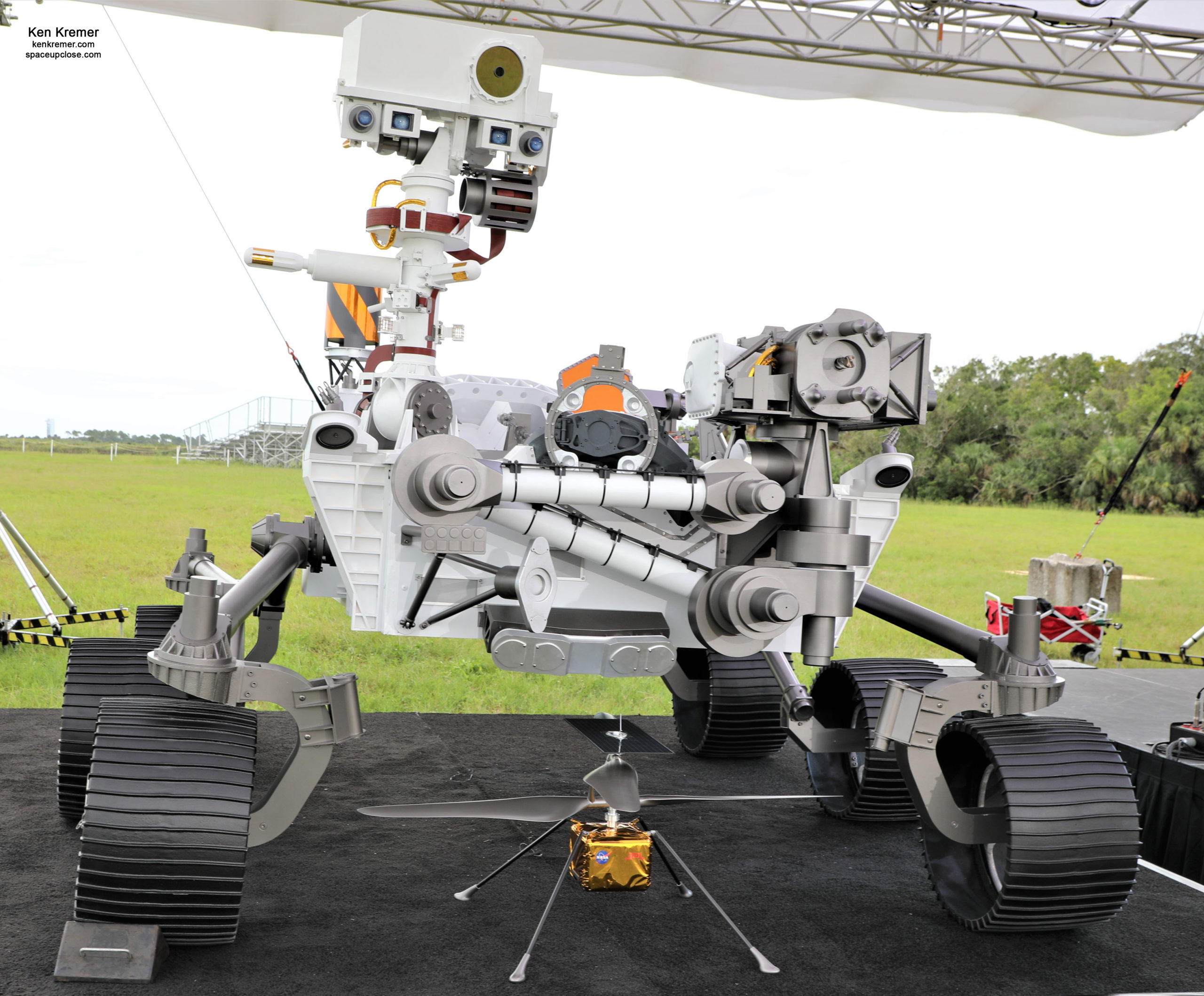
The Perseverance Mars 2020 mission will search for signs of past microbial life, characterize Mars’ climate and geology, collect samples for future return to Earth, and pave the way for human exploration of the Red Planet.
Also aboard is Ingenuity, a twin-rotor, solar-powered helicopter attached to the belly of the rover, will become the first aircraft to fly on another world.

The 1 ton rover will spend at least one Mars year (two Earth years) exploring the landing site region.
Perseverance is a robotic scientist weighing about 2,260 pounds (1,025 kilograms) and includes a robotic arm with a 99-pound (45-kilogram) turret at the end.
The rover is equipped with six advanced aluminum wheels on a rocker-bogie system.
The SUV sized rover dimensions are 10 feet (3 m) long, 9 feet (2.7 m) wide and 7 feet (2.2 m) tall with a 7 feet (2.1 meters) long robotic arm.
The rover is equipped with seven different scientific instruments and the mission includes 25 cameras – the most ever to Mars and deep space. The rover itself is equipped with 19 cameras.
The science payload has a mass of 130 pounds (59 kilograms) for seven instruments: Mastcam-Z, Mars Environmental Dynamics Analyzer (MEDA), Mars Oxygen In-Situ Resource Utilization Experiment (MOXIE), Planetary Instrument for X-ray Lithochemistry (PIXL), Radar Imager for Mars’ Subsurface Experiment (RIMFAX), Scanning Habitable Environments with Raman & Luminescence for Organics & Chemicals (SHERLOC) and SuperCam.
You can follow the Mars 2020 mission flight path here:
https://eyes.nasa.gov/apps/orrery/#/sc_perseverance
The solar powered Ingenuity helicopter is a technology demonstration experiment aimed at attempting the first flight on Mars.
It is stowed on the belly and receives its charge from the rover’s power supply.
The four legged Ingenuity has a mass of about 4.0 pounds (1.8 kilograms) and stands 1.6 feet or 19 inches (0.49 meters) high. It is equipped with two counter rotating blades for lift spinning at about 2,400 rpm and two cameras.
After Ingenuity is deployed on Mars’ surface its batteries will be charged solely by the helicopter’s own solar panel. If Ingenuity survives the cold Martian nights during its preflight checkout, the team will proceed with testing.
Under clear blue sunshine drenched skies the car-sized Perseverance Mars 2020 rover lifted off right on time at 7:50 a.m. EDT (1150 GMT) 30 July 2020 aboard a 19 story tall ULA Atlas V 541 rocket from Space Launch Complex 41 on Cape Canaveral Air Force Station, Florida.
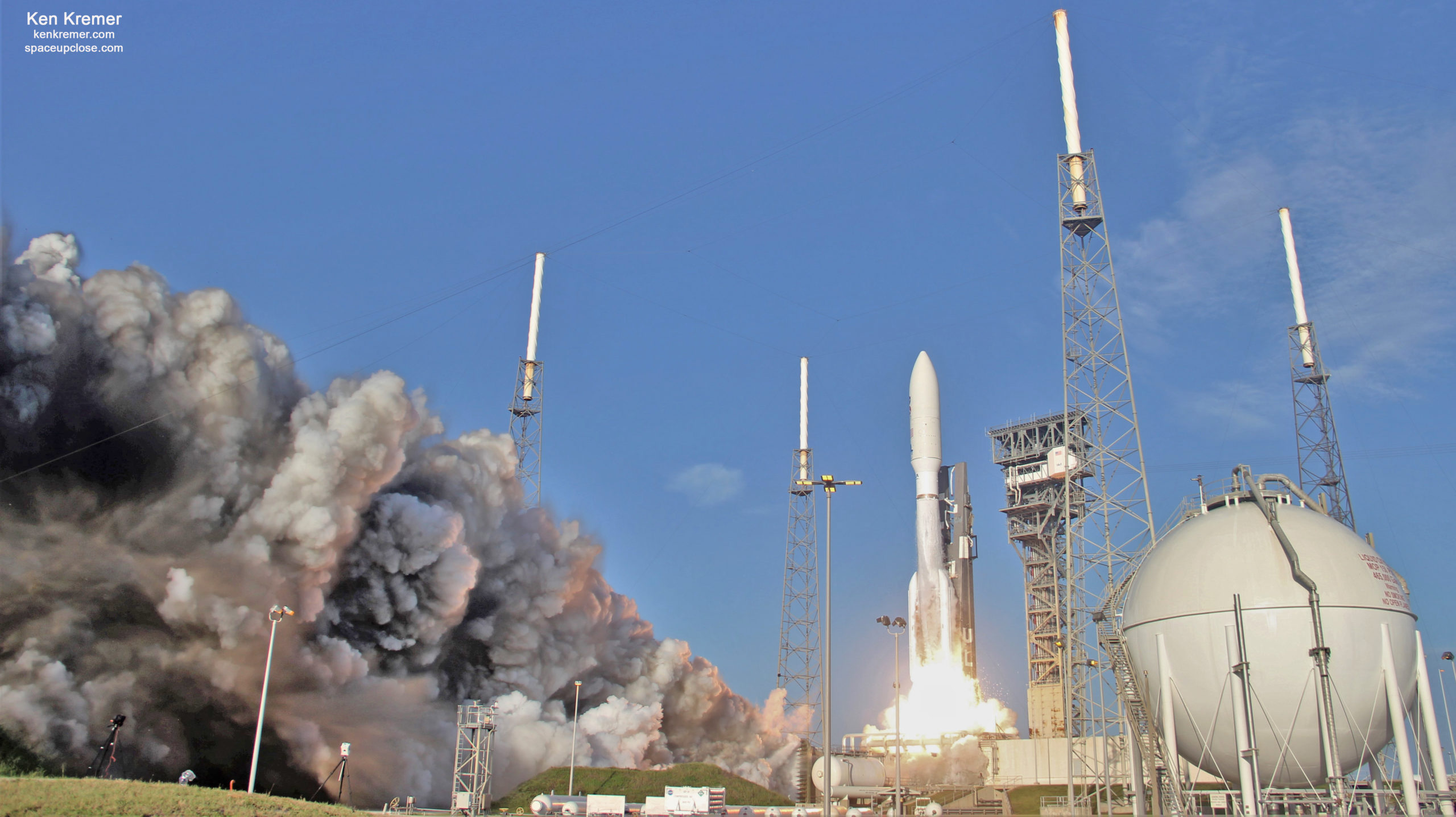
Check out our launch story and launch and prelaunch photos from pad 41
Learn more about Mars 2020 here:
Download our Free “Mars 2020 Exploration Mission Guide” created by RocketSTEM magazine and Space UpClose:
https://www.rocketstem.org/2020/07/20/mars-2020-mission-overview/
Link on Space UpClose Home Page upper right below Social Media links
My 12-page ‘Mars 2020 Perseverance Rover Mission Overview’:
https://www.rocketstem.org/2020/07/20/mars-2020-mission-overview/
Meanwhile her older twin sister river Curiosity just celebrated 3000 Sols of exploring Mars.
See my Sol 3000 mosaic and story here:
 NASA’s Curiosity rover celebrates 3000 Sols, or Martian days exploring the Red Planet in this mosaic panorama showing the ground level view with the rover in foreground and lower layers of Mount Sharp inside Gale Crater in the clay-bearing region called “Glen Torridon.” This navcam camera mosaic was stitched from left navigation camera raw images taken on Sol 3000, Jan. 12/13, 2021 and colorized. Credit: NASA/JPL/Ken Kremer/kenkremer.com/spaceupclose.comWatch our live and complete ‘Stay Curious’ Dec 14 and Dec. 30 , 2020 show on many space topics including Mars Perseverance, Artemis and human spaceflight.
NASA’s Curiosity rover celebrates 3000 Sols, or Martian days exploring the Red Planet in this mosaic panorama showing the ground level view with the rover in foreground and lower layers of Mount Sharp inside Gale Crater in the clay-bearing region called “Glen Torridon.” This navcam camera mosaic was stitched from left navigation camera raw images taken on Sol 3000, Jan. 12/13, 2021 and colorized. Credit: NASA/JPL/Ken Kremer/kenkremer.com/spaceupclose.comWatch our live and complete ‘Stay Curious’ Dec 14 and Dec. 30 , 2020 show on many space topics including Mars Perseverance, Artemis and human spaceflight.
Watch our live and complete ‘Stay Curious’ Dec 14 and Dec. 30 , 2020 show on many space topics including Mars Perseverance, Artemis and human spaceflight:
https://www.facebook.com/175507880819/videos/226784775573274
https://www.facebook.com/175507880819/videos/775199953071117
Watch Ken’s continuing reports about Mars 2020 Perseverance and Curiosity rovers, Artemis and NASA missions, SpaceX, Starlink, Commercial Crew and Starliner and Crew Dragon and onsite for live reporting of upcoming and recent SpaceX and ULA launches including Crew 1 & 2, Demo-2, ISS, X-37B, Solar Orbiter, NRO spysats and national security missions and more at the Kennedy Space Center and Cape Canaveral Space Force Station.
Stay tuned here for Ken’s continuing Earth and Planetary science and human spaceflight news: www.kenkremer.com –www.spaceupclose.com – twitter @ken_kremer – email: ken at kenkremer.com
Dr. Kremer is a research scientist and journalist based in the KSC area, active in outreach and interviewed regularly on TV and radio about space topics.
………….
Ken’s photos are for sale and he is available for lectures and outreach events
Ken has created hundreds of widely published Mars rover mosaics and lectures also about NASA’s Mars rovers
Please consider supporting Ken’s work by donating at Patreon:
https://www.patreon.com/kenkremer

x



